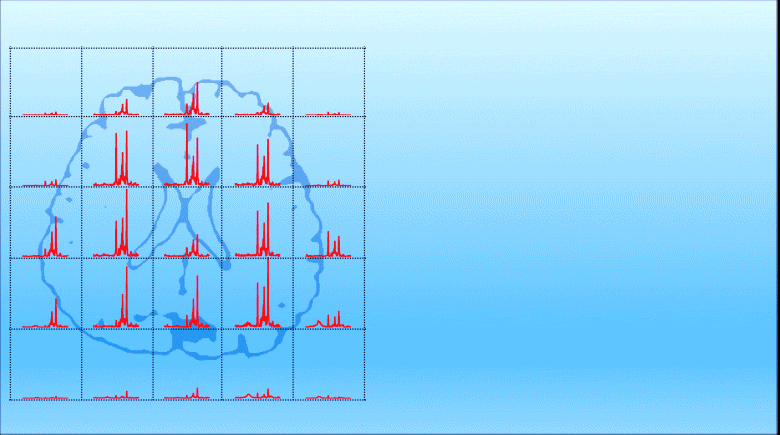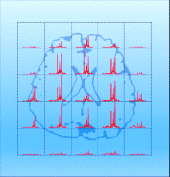
Magnetic resonance spectroscopic imaging (MRSI) is a unique tool for molecular imaging without exogenous contrast agents. For example, MRSI allows for mapping many brain metabolites, such as N-acetylaspartate, Choline, and Creatine, which provide useful information about neuronal viability, cellular membrane synthesis, and energy production, respectively. However, practical applications of MRSI have been limited by low signal-to-noise ratio (SNR), as metabolite concentrations are typically three to four orders of magnitude lower than that of water. Although many methods have been proposed to address this challenge, SNR remains a major technical hurdle for both research and clinical applications of MRSI, especially when high-resolution acquisition is desired.
This paper presents an improved low-rank denoising method for improving the SNR of MRSI data, which extends previous global low-rank filtering to compartmental low-rank filtering. The proposed method, coined CLORA (Compartmental LOw-Rank Approximation), includes several novel features: a) low-rank filtering based on the partial separability of the spatiospectral distributions of MRSI signals, b) compartmental low-ranking filtering incorporating tissue boundary constraints, and c) correction of B0 field inhomogeneity effects by rank-minimization. The performance of the proposed method was validated using simulated and in vivo brain MRSI data acquired on healthy subjects. Both the simulation and experimental results demonstrated that the proposed method can effectively improve the SNR of MRSI data under practical MRSI experiment conditions. Furthermore, the capability of CLORA in protecting weak and/or localized features that may not have sufficient energy to “survive” global low-rank filtering is also illustrated. We expect the proposed method to enhance the practical utility of high-resolution MRSI, where SNR has been a limiting factor.
Keywords: B0 field inhomogeneity correction, denoising, low-rank approximation, MR spectroscopic imaging, partial separability, subspace filtering

